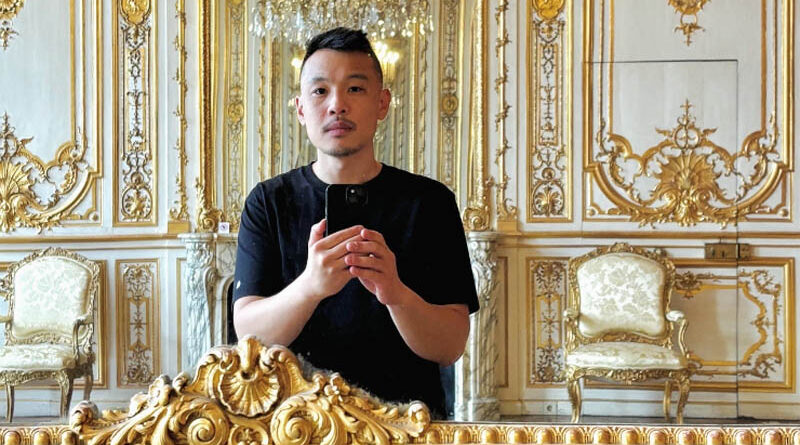Charlotte Prof Matthew Gin Brings Unique Perspective To Paris Olympics Ceremony
By all accounts, the opening ceremony for the 2024 Olympic Games in Paris had the largest audience ever – more than 300,000 in person and hundreds of millions on TV. The spectacle, which took place on and along the Seine river, was the first Olympic opening to be held outside of a stadium, but it was certainly not the first time the French had staged a magnificent display of pageantry on the Seine.
Assistant Professor of Architectural History Matthew Gin was among the throngs along the riverbanks, bringing to the occasion a unique perspective that places the contemporary celebration into centuries-old context. His article “Liberté, Égalité, Festivité: The Opening Ceremony of the 2024 Paris Olympics,” published this month in Journal18, demonstrates precedents for Paris 2024 in events staged nearly 300 years earlier.
Gin is an expert on French ephemeral architecture built for royal festivals and diplomatic ceremonies in the 18th century. His dissertation, Paper Monuments: The Politics of Ephemeral Festival Architecture in Enlightenment France, led to an article in the Journal of the Society of Architectural Historians earlier this year. “Staging Sovereignty: Ephemeral Architecture and the Entry of Maria Teresa Rafaela into France, 1745” reconstructs the event when Princess Maria Teresa Rafaela left Spain and became the bride of Prince Louis-Ferdinand of France, highlighting how temporary structures, like bridges and an elaborate pavilion, played an important role in the ceremony.
This summer, supported by grants from the American Philosophical Society and the American Historical Association and a fellowship from the John Carter Brown Library, Gin was in France to complete his archival research for a book, timing his travels so that he could witness the Olympic ceremony first-hand.
“The opening ceremony most strongly recalls two waterborne festivals staged in 18th-century Paris,” Gin wrote in Journal18. “One is the celebration given by the Spanish ambassadors to France in 1730 to belatedly mark the 1729 birth of Louis XV’s first son, the dauphin. The other… is the 1739 festival organized by the city of Paris to honor the marriage of Louis XV’s oldest daughter, Princess Louise-Élisabeth, to the Infante of Spain. While elaborate displays had been staged on the Seine since the 1540s, these two celebrations were unprecedented in their scale and sheer spectacle.”
The 1730 celebration, for example, featured a “vast floating garden” in the middle of the river, Gin writes, with “a mountain constructed of wood and papier-mâché whose twin peaks reached upwards of 80 feet, flanked by groves of trees and parterres de broderie traced out in grass and colored sand.”
Because the 2024 ceremony activities occurred along a three-mile stretch of the Seine, unlike the 18th-century predecessors, which occupied just one section of the river, the only way to see the full event was on a screen – whether you were physically at the ceremony or not. Gin finds an element of “égalité” in that set-up.
“Even from their privileged seating positions by the Eiffel Tower, President Macron and VIPs like Anna Wintour experienced most of the ceremony tele-technologically,” he writes. “The democratization was striking: the king’s central authoritative gaze replaced by the omnipotent view of the television camera.”
On October 30, Gin will talk about his Parisian experience and his larger body of research in a Colloquium in the School of Architecture. The presentation will take place in Storrs 290, 1:15-2:15 pm.

